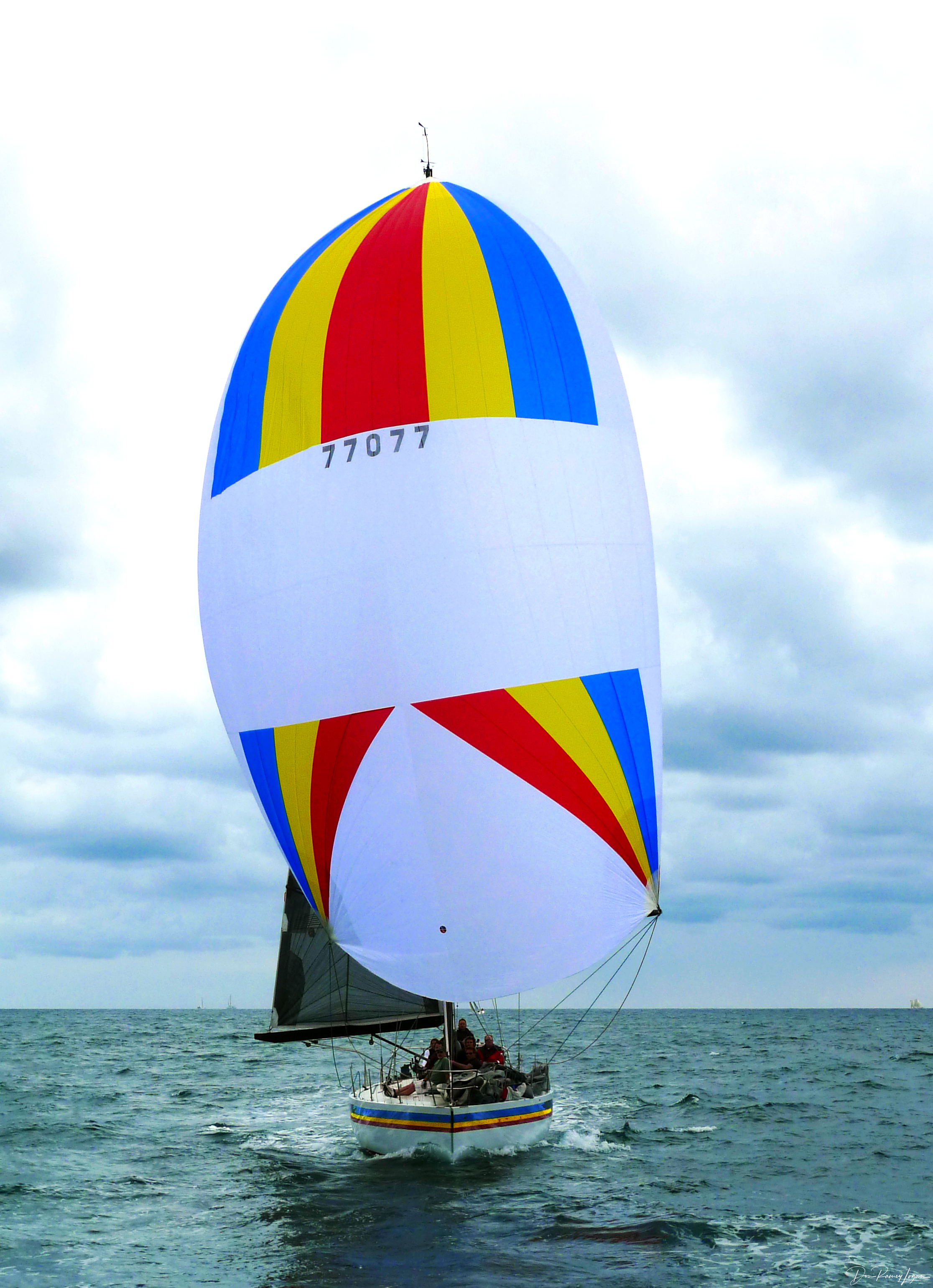|
Parasailor
The Parasailor and Parasail are patented and trademarked variants of a spinnaker sail for yachts. They were designed for cruising couples and short-handed crews and are considered to be easy to handle and well tempered. These sails make it possible to use one sail as spinnaker and Gennaker A gennaker is a sail that was developed before the 1980s. Used when sailing downwind, it is a cross between a genoa and a spinnaker. It is not symmetric like a true spinnaker but is asymmetric like a genoa, but the gennaker is not attached to .... These sails can be used between 70 and 180 degrees to the wind. Relieving the pressure on the bow and the stabilizing effect of the Parasailor and Parasail improve the effect of the rudder and decrease the rudder throws needed. The Parasailor has a double-layer wing which inflates as the wind fills the sail. This acts like a soft batten, holding the sail out and actively re-opening the collapsed leech. The wing generates a lift that raises the bow ... [...More Info...] [...Related Items...] OR: [Wikipedia] [Google] [Baidu] |
Spinnaker
A spinnaker is a sail designed specifically for sailing off the wind on courses between a Point of sail#Reaching, reach (wind at 90° to the course) to Point of sail#Running downwind, downwind (course in the same direction as the wind). Spinnakers are constructed of lightweight fabric, usually nylon, and are often brightly colored. They may be designed to perform best as either a reaching or a running spinnaker, by the shaping of the panels and seams. They are attached at only three points and said to be ''flown''. Etymology Some dictionaries suggest that the origin of the word could be traced to the first boat to commonly fly a spinnaker, a yacht called ''Sphinx'', mispronounced as ''Spinx''. ''Spinnaker'' entry in The Concise Oxford Dictionary of English Etymology (1996). Oxford University PressAccording to encyclopedia.com Both retrieved on 20 July 2008. ''Sphinx'' first set her spinnaker in the Solent in 1865, and the first recorded use of the word was in 1866 in the Augu ... [...More Info...] [...Related Items...] OR: [Wikipedia] [Google] [Baidu] |
Gennaker
A gennaker is a sail that was developed before the 1980s. Used when sailing downwind, it is a cross between a genoa and a spinnaker. It is not symmetric like a true spinnaker but is asymmetric like a genoa, but the gennaker is not attached to the forestay like a jib or genoa. The gennaker is rigged like a spinnaker but the tack is fastened to the hull or to a bowsprit. It has greater camber than a genoa (but significantly less camber than a spinnaker). This is optimal for generating lift at larger angles of attack. An early form of gennaker was the "gollywhomper", used briefly in the 1870s. The gennaker is a specialty sail primarily used on racing In sports, racing is a competition of speed, in which competitors try to complete a given task in the shortest amount of time. Typically this involves traversing some distance, but it can be any other task involving speed to reach a specific g ... boats to bridge the performance gap between a genoa and a spinnaker. It is ... [...More Info...] [...Related Items...] OR: [Wikipedia] [Google] [Baidu] |
Wing Technology
A wing is a type of fin that produces both Lift (force), lift and drag while moving through air. Wings are defined by two shape characteristics, an airfoil section and a planform (aeronautics), planform. Wing efficiency is expressed as lift-to-drag ratio, which compares the benefit of lift with the air resistance of a given wing shape, as it flies. Aerodynamics is the study of wing performance in air. Equivalent Foil (fluid mechanics), foils that move through water are found on Hydrofoil, hydrofoil power vessels and Sailing hydrofoil, foiling sailboats that lift out of the water at speed and on submarines that use diving planes to point the boat upwards or downwards, while running submerged. Hydrodynamics is the study of foil performance in water. Etymology and usage The word "wing" from the Old Norse ''vængr'' for many centuries referred mainly to the foremost limb (anatomy), limbs of birds (in addition to the architectural aisle). But in recent centuries the word's meaning ha ... [...More Info...] [...Related Items...] OR: [Wikipedia] [Google] [Baidu] |

